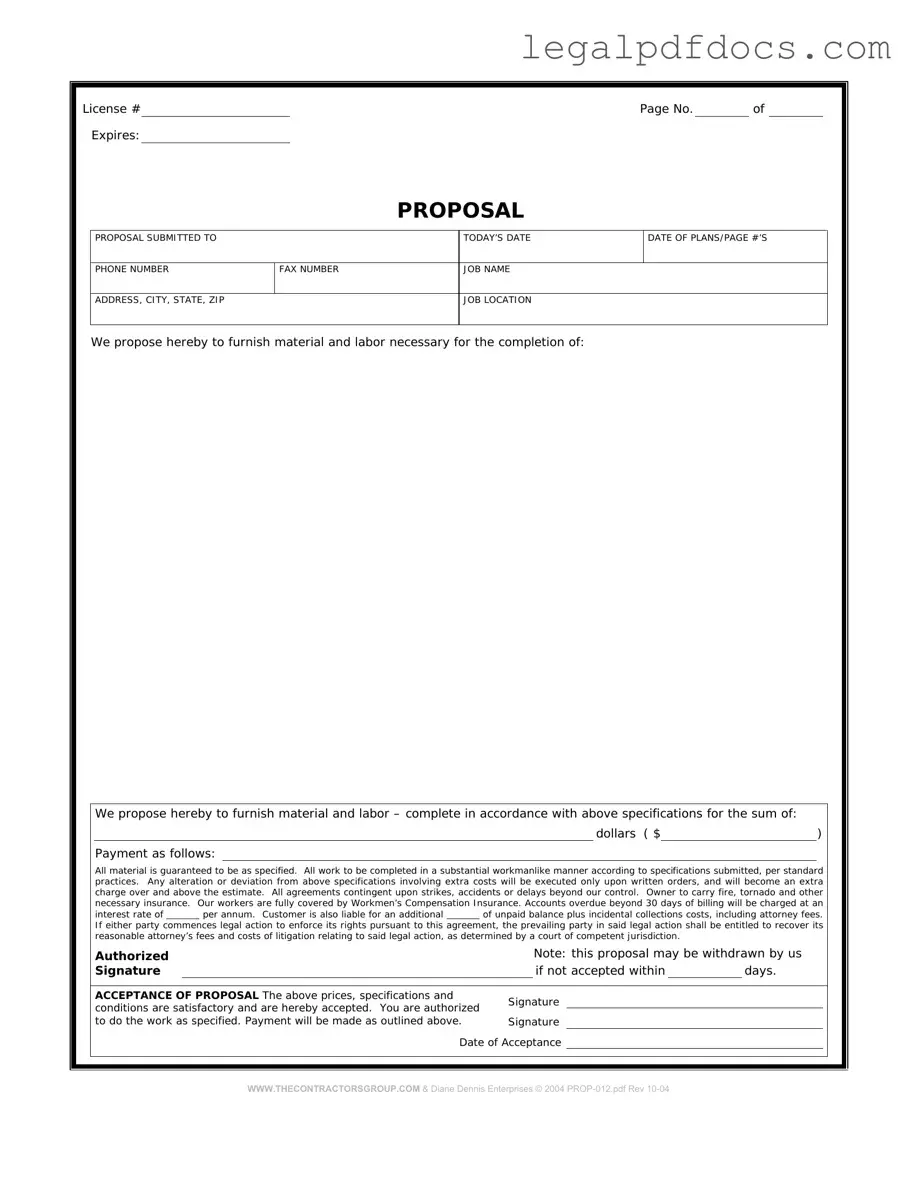Fill Out a Valid Construction proposal form Template
The Construction Proposal Form is a document used by contractors to outline the details of a construction project, including scope, costs, and timelines. This form serves as a crucial tool for both the contractor and the client, ensuring that all parties have a clear understanding of the project requirements. To get started on your construction project, fill out the form by clicking the button below.
Open Construction proposal form Editor Here
